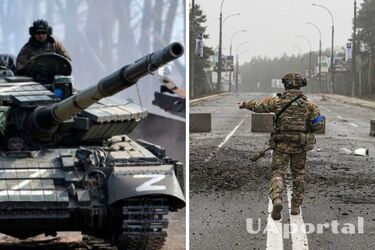Is a new offensive against Kyiv possible: what do Russians need for this?

BLOG
After the flight of Russian troops from northern Ukraine, which resulted from the failed offensive on Kyiv in 2022, information about the threat of a repeat of such a "campaign" regularly appears on the Internet. In most cases, it is untrue, as there is no formation of a strike group in Belarus capable of repeating such a scenario. But the question is: what resources do the Russian occupation forces need for such a breakthrough and at least the beginning of urban battles for Kyiv? Let's find out.
Offensive 2022
First, it is worth recalling what forces and means the Russians used to attack Kyiv in 2022 from the territory of Belarus.
Up to 40 BTGs of the Russian occupation forces, or more than 35,000 personnel in the numerical equivalent, participated in the invasion on February 24, 2022, through Chernihiv, Sumy, and Kyiv regions from the territory of Belarus. Taking into account the reserves and the rear unit, which provided support to the advanced units from the territory of Belarus, the total number of the group exceeded 40 thousand.
It is worth noting that these were elite and fully staffed units, the training and formation of which took not just years, but decades!
This grouping included the 6th Tank Regiment, 239th TA, 37th Separate Motorized Rifle Brigade, 64th Separate Mechanized Infantry Brigade, 11th Separate Air Assault Brigade, 31st Separate Airborne Brigade, 234th Separate Airborne Brigade, 45th Separate Special Operations Brigade, 14th Special Forces Brigade of the General Staff of the Russian Armed Forces and other units.
This breakthrough resulted in enormous losses in manpower and equipment of this group, which forced it to leave the captured foothold very quickly, literally within a month.
Thus, the resources of the RAF to repeat the offensive on Kyiv not just for the sake of imitation, but to achieve at least some effect (at least holding the territories), would require a completely different - much greater - level.
What kind of resources are needed for the RAF?
Roughly, to be successful in the direction of Kyiv, the grouping of Russian occupation forces should be up to 120 thousand personnel. This number should be sufficient to operate in Chernihiv and Kyiv regions, covering their part of the 2205 and E-95 highways, but it does not allow for full coverage of both regions.
At the same time, these units should be fully staffed with equipment to effectively perform combat missions, namely
Tanks - 1650;
ARMORED PERSONNEL CARRIERS - 4950
cannon artillery - 1800;
MLRS - 1800.
In addition, they must have full echeloned air defense cover, both on the march and that which is formed as they advance, as well as air support. An important component is to ensure dense and stable artillery fire during the breakthrough of the main defense lines, namely, from 20 to 40 thousand rounds per day in this direction alone.
This is the kind of potential that the RAF should have to try to break through the Ukrainian Defense Forces' defense and advance toward Kyiv. But even this will not be enough to start successful battles in the city itself. And when will Russia be able to assemble such a resource?
Mobilization
As of today, Russia does not have the extra 120,000 troops that it could afford to send to a new direction. It can only get such a contingent through mobilization. At the same time, the mobilization potential of the aggressor country without stressing the system is 50-60 thousand people. This is the limit. When Russia mobilized 100,000 people a month in 2022, the system was under severe stress and bursting at the seams.
Today, monthly mobilization in Russia is 20, 25, and peaks at 30 thousand per month. This number is enough to compensate for losses and gradually increase the human resources in a particular group of troops. For the RAF, it is particularly important to build up the "South" group of troops operating in the Donetsk region, neglecting the rest.
That is, with the current intensity of fighting and compensation for losses, Russia will be able to form units totaling 20-30 thousand personnel per month with a larger-scale mobilization. That is, the 120,000 mark could be reached within 4-6 months.
However, if at least minimal attention is paid to the training of these units and they undergo basic training, the last mobilized in this group will have 2-3 months to complete the training course before they are fully ready. Then there is coordination.
If all the minimum requirements are met, it may take from 7 months to a year to create a group of 120,000 troops.
But still, these mobilized but trained troops will not be the same elite thugs that the JFO knocked out of the northern foothold in 2022.
In addition to the personnel, there is the issue of equipment - and not only that.
Equipment and support
Above, I mentioned what a complete equipment package for a 120,000-strong strike force looks like. That is, within 7 months and up to a year, the Russian military-industrial complex will have to transfer to the Russian army not only the same number of tanks, armored personnel carriers, cannon, and rocket artillery, but also continue to supply similar equipment to other units to compensate for losses.
It has been repeatedly noted that the Russians have a severe shortage of equipment. They cannot fully staff their units, and therefore some of them are equipped with 30% of the standard equipment. That is, the deficit is 70%!
Can the Russian military-industrial complex afford to supply 1,650 tanks or almost 5,000 armored personnel carriers to the newly created units that will fight soon, not here and now? Perhaps, but only to the detriment of supplies to those in the combat zone, which, of course, will immediately begin to sag due to an even greater lack of equipment.
The issue of artillery is no less interesting. And the question is not so much the number of units as the number of shots per day to break through the enemy's defense.
Currently, the ROVs fire an average of 10 and 15 thousand (peak) shots per day. Even with the support of the DPRK and Iran, the Russian occupiers cannot reach even a third of the rate they could afford in February-March 2022 - 60, 70, and even 80 thousand rounds per day!
Consequently, there will be no sufficient support from artillery, and instead of a quick breakthrough of the defense, Russian troops will begin to stumble between the lines, suffering losses.
Aviation will be of little use in this matter, since its use in the Kyiv region, where one of the best air defense systems not only in Ukraine but also, I will take the responsibility to say, in Europe, is echeloned, will be able to destroy Russian aircraft even before they enter the country's airspace. If, of course, an order is given to eliminate Russians in the skies of Belarus.
Conclusions
The Russian command has been, is, and will continue to be planning to capture Kyiv. This threat will remain for a very long time. But in today's realities, forming a full-fledged strike force for such an operation is simply an impossible task for Russia, not to mention supplying it with all the necessary nomenclature daily.
Yes, they could go all-in and try to invade from the north, using understaffed units of untrained mobilized troops. But this will be even worse for them than in 2022, and with greater losses. And not only human and technical losses, but also territorial losses on other footholds.
Therefore, in today's realities, a breakthrough and the capture of Kyiv by Russian occupation forces are impossible.

